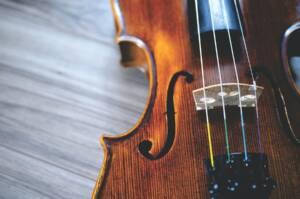The Immersive Experience: Sound Installations that Transport You to Another World

Sound has a unique ability to transport us to other worlds and create immersive experiences. Whether it’s the sound of crashing waves on a beach or the ethereal melodies of a symphony, sound has the power to evoke emotions and transport us to different places. One way that sound is used to create these immersive experiences is through sound installations. These installations are a unique form of art that combines sound, space, and technology to create otherworldly environments.
The Role of Sound Installations in Creating Otherworldly Environments
Sound installations have the ability to create otherworldly environments that transport us to different places. They can be used in a variety of settings, including art installations, museums, and public spaces. In these settings, sound installations can transform a space into something completely different, creating a sense of wonder and awe.
In art installations, sound can be used to enhance the visual experience and create a multi-sensory experience for the viewer. For example, an artist may use sound to accompany a visual installation, adding another layer of depth and meaning to the artwork. In museums, sound installations can be used to bring historical or cultural exhibits to life, allowing visitors to immerse themselves in the sights and sounds of a different time or place. In public spaces, sound installations can be used to create a sense of community and connection, bringing people together through shared experiences.
The History of Sound Installations and Their Evolution Over Time
Sound installations have been around for centuries, but they have evolved significantly with advancements in technology. Early sound installations were simple and often used natural sounds such as wind or water. These installations were often found in religious or spiritual settings, where the sounds were believed to have healing or transformative properties.
As technology advanced, so did sound installations. In the 20th century, artists began experimenting with electronic and synthesized sounds, creating installations that were more abstract and avant-garde. These installations often used complex sound systems and speakers to create immersive soundscapes.
Today, sound installations have become even more sophisticated with the use of advanced technology. Artists can now create immersive experiences using virtual reality, 3D audio, and interactive elements. These advancements have opened up new possibilities for sound installations, allowing artists to push the boundaries of what is possible.
The Science of Sound and Its Effect on Human Emotions and Perception
Sound has a profound effect on human emotions and perception. Different frequencies and tones can evoke different emotions and feelings. For example, low-frequency sounds can create a sense of calm and relaxation, while high-frequency sounds can create a sense of excitement or tension.
Sound also has the ability to alter our perception of space. By manipulating the direction and intensity of sound, artists can create the illusion of movement or distance. This can enhance the immersive experience of a sound installation, making it feel as though you are truly transported to another world.
The science behind sound and its effect on human emotions and perception is still being explored, but it is clear that sound has a powerful impact on our well-being. Studies have shown that listening to certain types of music can reduce stress and anxiety, promote relaxation, and even improve cognitive function. Sound installations take this concept to the next level by creating immersive experiences that engage all of our senses.
The Different Types of Sound Installations and Their Unique Characteristics
There are many different types of sound installations, each with their own unique characteristics. Some installations use natural sounds, such as recordings of birdsong or ocean waves, to create a sense of tranquility and connection to nature. These installations are often found in outdoor settings or in spaces that are designed to evoke a sense of calm and relaxation.
Other installations use synthesized sounds or electronic music to create more abstract or futuristic environments. These installations often use complex sound systems and speakers to create immersive soundscapes that envelop the listener. The sounds can be manipulated in real-time, allowing the artist to create a dynamic and ever-changing experience.
Some sound installations also incorporate visual elements, such as projections or lighting effects, to enhance the immersive experience. These installations combine sound and visual art to create a multi-sensory experience that engages the viewer on multiple levels.
The Importance of Location and Space in Creating Immersive Soundscapes
The location and space of a sound installation are crucial to creating an immersive soundscape. The acoustics of a space can greatly affect the sound quality and overall experience. For example, a large, open space with high ceilings may create a sense of expansiveness and echo, while a small, intimate space may create a sense of closeness and intimacy.
In addition to the physical characteristics of a space, the location of a sound installation can also play a role in creating an immersive experience. For example, an installation located in a natural setting, such as a forest or beach, can create a sense of connection to nature. On the other hand, an installation located in an urban environment may create a sense of contrast or juxtaposition.
The placement of speakers and other audio equipment is also important in creating an immersive soundscape. By strategically placing speakers throughout a space, artists can create a sense of movement or directionality in the sound. This can enhance the immersive experience and make it feel as though you are truly surrounded by the sound.
The Role of Technology in Enhancing the Immersive Experience
Technology plays a big role in enhancing the immersive experience of sound installations. Advanced sound systems and virtual reality can create even more immersive experiences by engaging multiple senses and creating a sense of presence.
One example of technology used in sound installations is 3D audio. 3D audio uses multiple speakers placed throughout a space to create a three-dimensional sound experience. This allows the artist to create a sense of movement or directionality in the sound, making it feel as though you are truly surrounded by the sound.
Virtual reality is another technology that is often used in sound installations. Virtual reality allows the viewer to enter a completely immersive digital environment, where they can interact with the sound and visuals in real-time. This technology can create a truly transformative experience, allowing the viewer to explore otherworldly environments and engage with the art in new and exciting ways.
The Collaborative Nature of Sound Installations and Their Impact on the Community
Sound installations are often collaborative efforts between artists, musicians, and engineers. These collaborations bring together different perspectives and skills, resulting in innovative and unique installations. The collaborative nature of sound installations also extends to the community, as they often involve local artists, musicians, and community members.
Sound installations have the potential to have a positive impact on the community by bringing people together and creating shared experiences. They can be used to activate public spaces and create a sense of community ownership. For example, a sound installation in a park may attract people from all walks of life, creating a sense of connection and shared experience.
Sound installations can also be used as a tool for education and outreach. They can be used to teach people about different cultures or historical events, or to raise awareness about social or environmental issues. By engaging the community in the creation and experience of a sound installation, artists can foster a sense of ownership and pride in their work.
The Future of Sound Installations and Their Potential for Innovation and Creativity
The future of sound installations is bright, with endless potential for innovation and creativity. New technology and techniques will continue to push the boundaries of what is possible. For example, advancements in virtual reality and augmented reality will allow artists to create even more immersive experiences that engage multiple senses.
Advancements in sound technology will also play a role in the future of sound installations. For example, advancements in 3D audio and spatial audio will allow artists to create even more realistic and immersive soundscapes. These advancements will allow for more dynamic and interactive installations, where the viewer can actively engage with the sound and visuals.
The future of sound installations will also be shaped by the artists themselves. As more artists experiment with sound as a medium, new and innovative installations will continue to emerge. Artists will continue to push the boundaries of what is possible, creating installations that challenge our perceptions and transport us to other worlds.
The Benefits of Immersive Sound Experiences for Mental Health and Well-Being
Immersive sound experiences can have a positive impact on mental health and well-being. Sound has long been used as a tool for relaxation and stress relief, and immersive sound experiences take this concept to the next level.
Listening to certain types of music or sounds can reduce stress and anxiety, promote relaxation, and even improve cognitive function. Immersive sound experiences can enhance these benefits by creating a sense of presence and engagement. By immersing ourselves in a soundscape, we can temporarily escape from the stresses of everyday life and enter a state of relaxation and mindfulness.
Immersive sound experiences can also promote a sense of connection and community. By bringing people together through shared experiences, sound installations can foster a sense of belonging and social connection. This can have a positive impact on mental health and well-being, reducing feelings of loneliness and isolation.
The Enduring Appeal of Sound Installations in Transporting Us to Other Worlds
Sound installations have an enduring appeal because of their ability to transport us to other worlds. Whether it’s the sounds of nature or the ethereal melodies of an electronic composition, sound has the power to evoke emotions and create immersive experiences. Sound installations combine sound, space, and technology to create otherworldly environments that engage all of our senses.
As technology continues to advance, so too will the possibilities for sound installations. New techniques and technologies will allow artists to create even more immersive and transformative experiences. Sound installations will continue to be a popular and innovative way to create immersive experiences for years to come.





